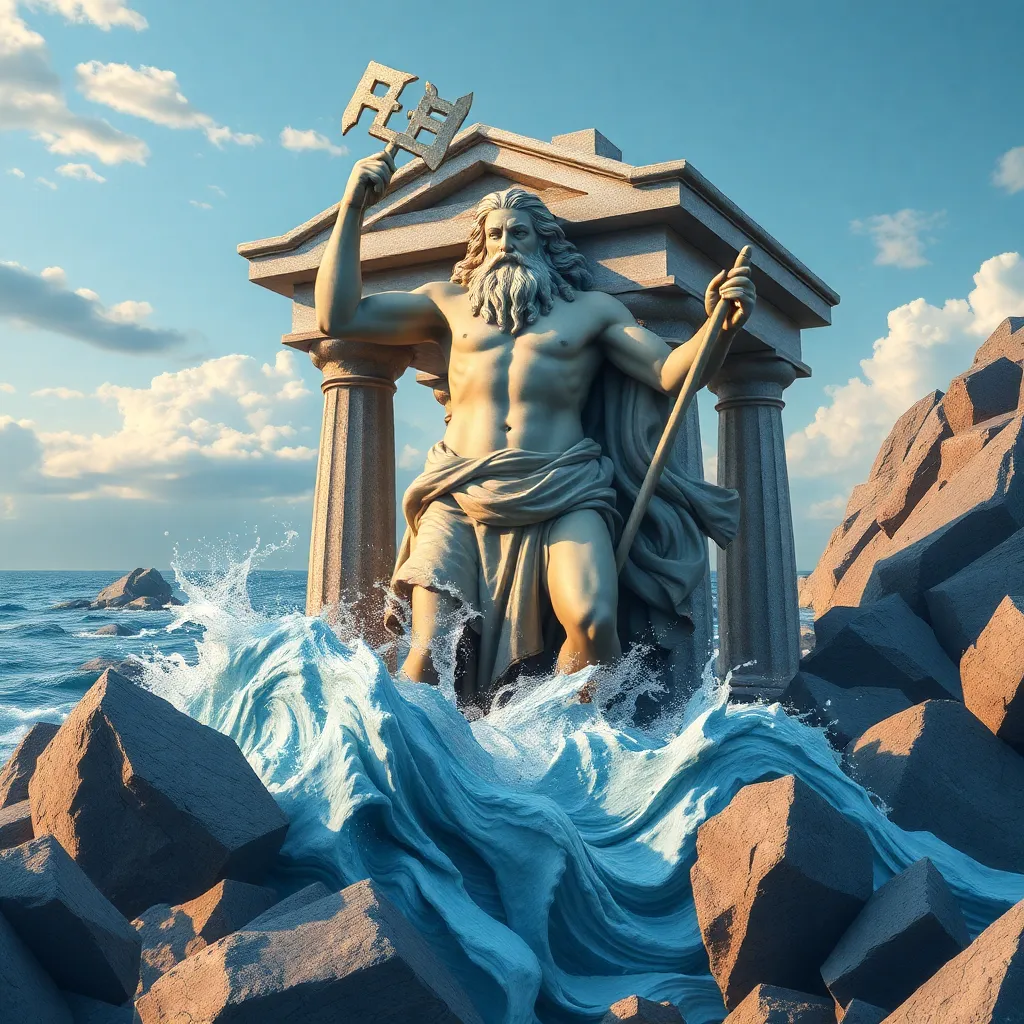How Poseidon Became the God of Earthquakes: A Mythological Analysis
I. Introduction
In the rich tapestry of Greek mythology, Poseidon stands out as a formidable figure, revered as the god of the sea, storms, and horses. However, his role as the God of Earthquakes is equally significant, reflecting the ancient Greeks’ understanding of the natural world and the forces that govern it. Earthquakes, often seen as manifestations of divine wrath or power, played a crucial role in the cultural psyche of the Greeks. This article aims to explore the mythological origins of Poseidon as the God of Earthquakes, tracing his lineage, attributes, and the myths that solidified his connection to this natural phenomenon.
II. The Origins of Poseidon
A. Birth and family lineage
Poseidon, one of the twelve Olympian gods, was born to the Titans Cronus and Rhea. His family lineage is significant, as it connects him to other major deities in Greek mythology:
- Parents: Cronus and Rhea
- Siblings: Zeus, Hades, Hera, Demeter, and Hestia
B. The division of the cosmos among the Olympian gods
After the overthrow of Cronus, the newly established Olympian gods divided the cosmos among themselves. This division was critical in shaping Poseidon’s identity:
- Poseidon’s claim to the sea: He received dominion over the oceans, which became his primary realm.
- Emergence of his association with earthquakes: With his control over the oceans, Poseidon also became associated with seismic activity, as the Greeks believed that the sea’s movements were linked to the earth’s tremors.
III. Poseidon’s Attributes and Symbols
A. The trident as a symbol of power
Poseidon is often depicted wielding a trident, a three-pronged spear that symbolizes his authority over the sea and, by extension, the earthquakes he could cause. The trident is a powerful emblem of his dominion and is central to his identity as a god.
B. Other symbols associated with Poseidon
In addition to the trident, Poseidon is associated with various symbols that reflect his nature:
- Horses: Often considered his creation, horses symbolize strength and are linked to Poseidon’s dominion over the sea.
- Sea creatures: Dolphins and other marine life are frequently depicted in art, further cementing his connection to the ocean and its unpredictable forces.
IV. Myths of Poseidon and Earthquakes
A. Key myths illustrating Poseidon’s role in causing earthquakes
Several myths highlight Poseidon’s connection to earthquakes:
- The contest with Athena for Athens: In a bid to become the patron deity of Athens, Poseidon struck the ground with his trident, causing a spring to erupt. However, Athena’s gift of the olive tree ultimately secured her victory, illustrating Poseidon’s temperamental nature and his ability to shake the earth.
- The punishment of the Trojans during the Trojan War: Poseidon played a pivotal role in the war, sending earthquakes to shake the walls of Troy, showcasing his power to wreak havoc when angered.
B. Interpretations of these myths in the context of natural disasters
These myths serve as allegories for understanding the unpredictable nature of earthquakes. The ancient Greeks personified these disasters through Poseidon to explain the otherwise inexplicable occurrences that affected their lives.
V. The Cultural Impact of Poseidon’s Earthquake Mythology
A. Influence on ancient Greek society and its understanding of natural phenomena
Poseidon’s association with earthquakes shaped how the ancient Greeks perceived seismic activity. They viewed these events as signs of divine intervention, leading to a blend of fear and reverence for the god.
B. Poseidon’s worship and rituals related to earthquakes
Worship of Poseidon included various rituals aimed at appeasing him to prevent earthquakes:
- Offerings of horses and other animals.
- Festivals that celebrated his power and sought his favor.
C. Artistic representations of Poseidon as the earthquake god
Art from ancient Greece often depicted Poseidon in the midst of causing earthquakes, showcasing his trident and symbolizing his dual nature as both a creator and destroyer.
VI. Poseidon in Comparison with Other Earthquake Deities
A. Examination of similar deities in other cultures
Poseidon is not alone in his role as a deity associated with earthquakes. Other cultures have their own earthquake gods:
- Enlil: In Mesopotamian mythology, Enlil is the god of wind and storms and is also associated with earthquakes.
- Kanaloa: In Hawaiian mythology, Kanaloa is a god of the sea and is thought to have connections to earthquakes and other natural phenomena.
B. Cross-cultural analysis of earthquake personifications
These comparisons reveal a common thread in human culture: the need to personify natural disasters, which allows societies to grapple with their unpredictability and power through myth and worship.
VII. Modern Interpretations and Legacy
A. Poseidon’s role in contemporary popular culture
Today, Poseidon remains a prominent figure in popular culture, appearing in literature, films, and video games, often depicted as a powerful and vengeful god capable of causing earthquakes.
B. Ongoing relevance of his myth in discussions about natural disasters
The narrative of Poseidon continues to be relevant in modern discussions about natural disasters, as it reflects humanity’s enduring struggle to understand and explain the forces of nature.
C. Lessons from Poseidon’s myths in today’s understanding of geology and earthquakes
Poseidon’s myths serve as a reminder of the ancient Greeks’ attempts to explain seismic activity, paralleling modern scientific inquiries into geology and the causes of earthquakes.
VIII. Conclusion
In summary, Poseidon’s evolution as the God of Earthquakes is a fascinating aspect of Greek mythology that reflects the ancients’ understanding of the natural world. His dual nature as both a creator and destroyer captures the essence of human experiences with nature’s fury. The enduring nature of these mythological narratives continues to resonate, reminding us of the power and unpredictability of the earth beneath our feet.




